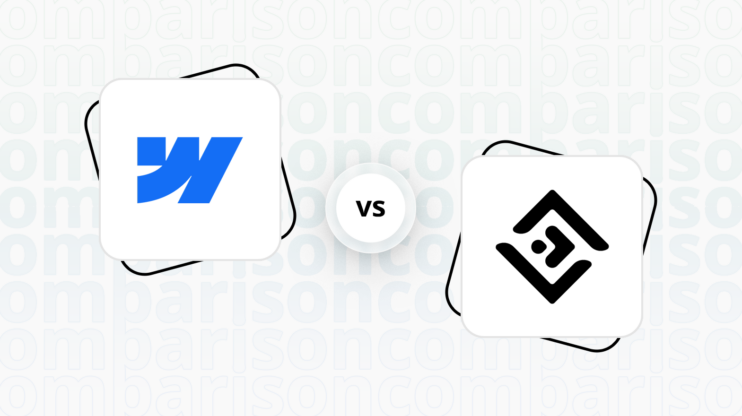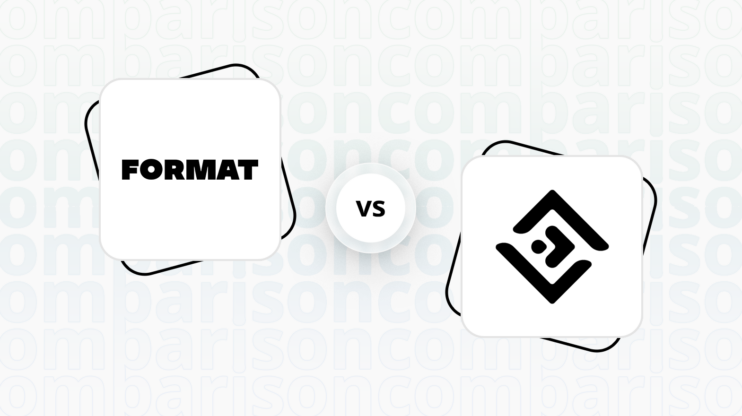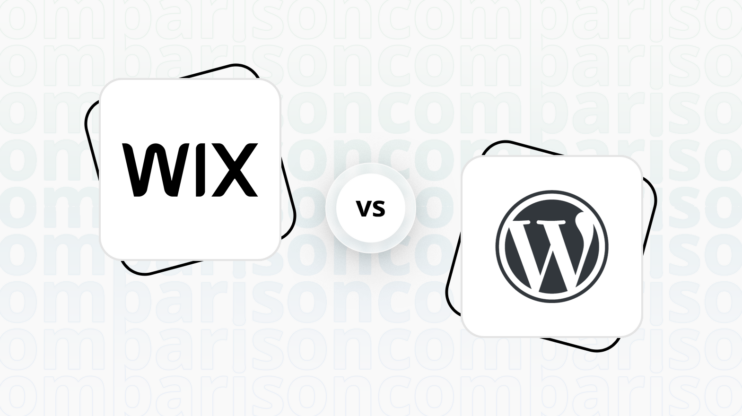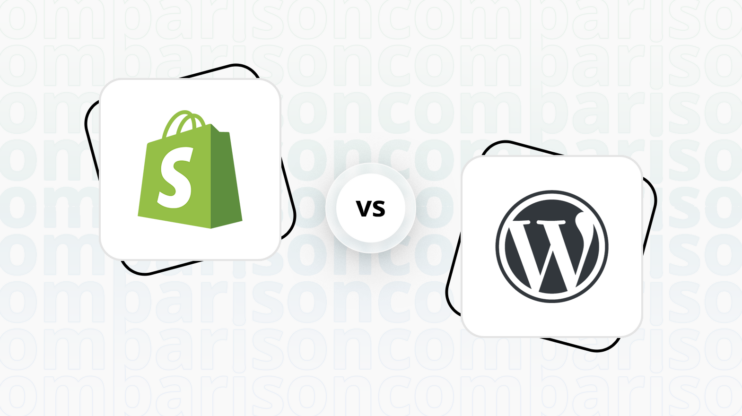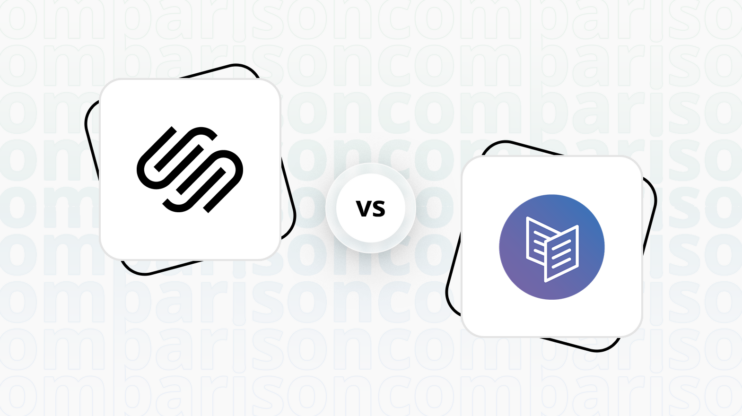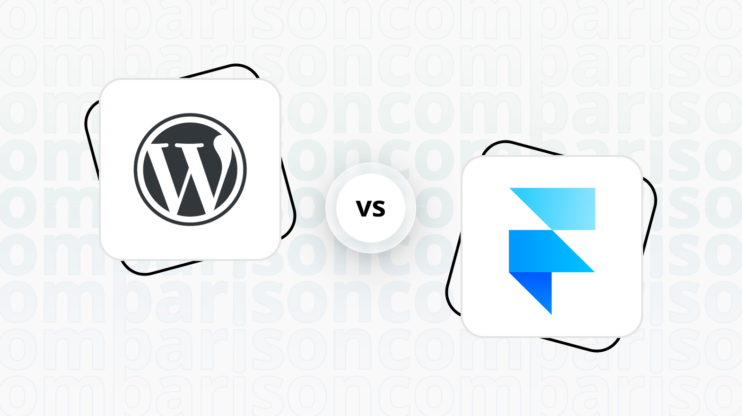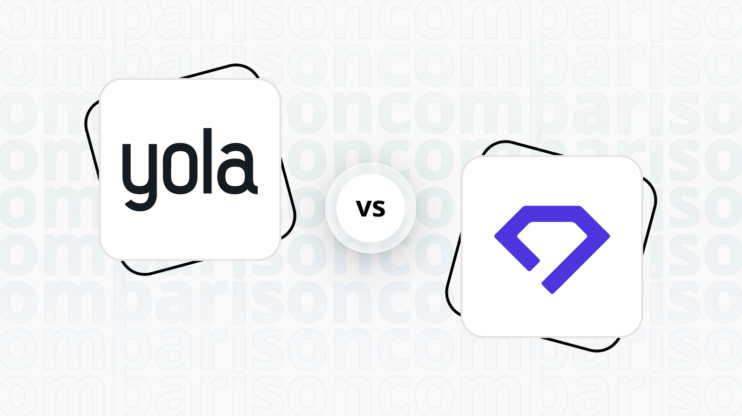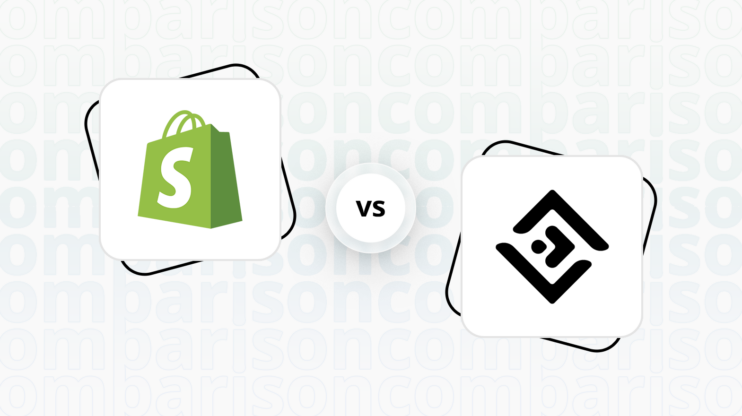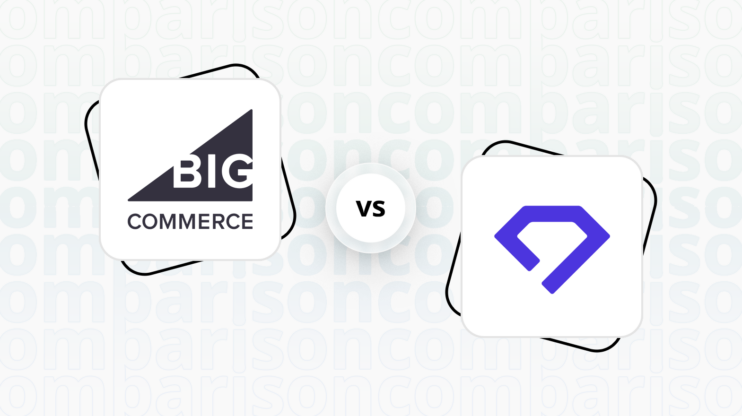Final verdict
Between Webflow and Format, Webflow emerges as the more versatile and powerful platform, particularly for users requiring advanced design capabilities and ecommerce features.
-
Webflow (Overall Grade: 7.9/10)
excels with its comprehensive design tools, robust ecommerce solutions, and superior hosting quality. It’s particularly suited for professional designers and businesses looking for a high degree of customization and scalability. Webflow’s platform offers a steep but rewarding learning curve, with extensive resources available for users to master its capabilities. -
Format (Overall Grade: 5.8/10)
, while more niche, provides a user-friendly solution for creative professionals looking to showcase their portfolios. It scores higher in ease of use and product testing options, making it an attractive choice for artists, photographers, and designers who prioritize simplicity and visual appeal over complex functionality.

|

|
|
|---|---|---|
|
Design functionalities & templates |
8.6 |
7.0 |
|
Ease of use |
7.5 |
8.3 |
|
Ecommerce |
8.5 |
5.2 |
|
Website Editors |
9.0 |
7.5 |
|
Product testing options |
6.3 |
8.3 |
|
Price |
8.0 |
7.9 |
|
Hosting quality |
8.9 |
5.0 |
|
Website speed optimization |
8.1 |
5.0 |
|
Plugins and integrations |
5.5 |
4.9 |
|
Marketing features |
7.8 |
5.3 |
|
Customer support |
8.3 |
7.0 |
|
Security |
7.8 |
7.4 |
|
AI capabilities |
8.3 |
0.0 |
|
User Management |
8.3 |
2.8 |
| Overall |
7.9 |
5.8 |
Best for ecommerce
 8.5
8.5
 5.2
5.2
Verdict
: For those aiming to build a comprehensive online store with advanced features, Webflow is the superior choice over Format, which caters more to creatives looking to sell a limited number of items.
-
Webflow
: Offers a powerful suite of ecommerce tools, including advanced payment gateways, scalable product management, and detailed analytics. It’s designed for businesses looking to grow their online presence. -
Format
: While it provides essential ecommerce functionalities and is user-friendly for creatives, Format falls short in scalability and advanced features compared to Webflow.
Best for informational & business websites
 8.6
8.6
 7.2
7.2
Verdict
: Webflow stands out as the superior choice for informational and business websites, offering advanced design capabilities, superior hosting, and better security measures.
-
Webflow
: With a score of 8.6, Webflow excels in providing a comprehensive solution for creating custom, responsive websites. Its powerful design tools, flexible CMS, and top-tier hosting services make it ideal for businesses and professionals seeking a robust platform for their informational sites. -
Format
: Scoring 7.2, Format is designed with creative professionals in mind, offering customizable templates and an intuitive interface. However, it falls short in offering the depth of design customization, hosting details, and security features that Webflow provides, making it less ideal for more complex informational and business website needs.
Detailed comparison
Design functionalities & templates
Design FunctionalitiesRepresents how well each platform allows for creative design and customization of websites.Score Components:
- Template Variety (30%): Range and quality of design templates.
- Customization (30%): Flexibility and options for design alterations.
- User Interface (20%): Ease and intuitiveness of the design process.
- Responsiveness (10%): Adaptability to different devices and screen sizes.
- Innovation (10%): Unique design features and tools.
 8.6
8.6
 7.0
7.0
🏆
Winner: Webflow.
If you’re looking for a platform that offers more robust design features and a wider variety of templates, Webflow is the preferred choice.
Webflow delivers a robust design experience with a diverse range of template and customization options. Boasting over 1000 pre-built templates covering various industries and website types, including free and premium options, Webflow ensures a constantly evolving library for users. Templates are categorized for easy browsing, considering industry, website type, style, and features. The design customization features include a visual drag-and-drop editor for real-time adjustments, fine-grained control over every aspect of the design, and the ability to inject custom code for advanced users seeking additional personalization and unique functionalities.
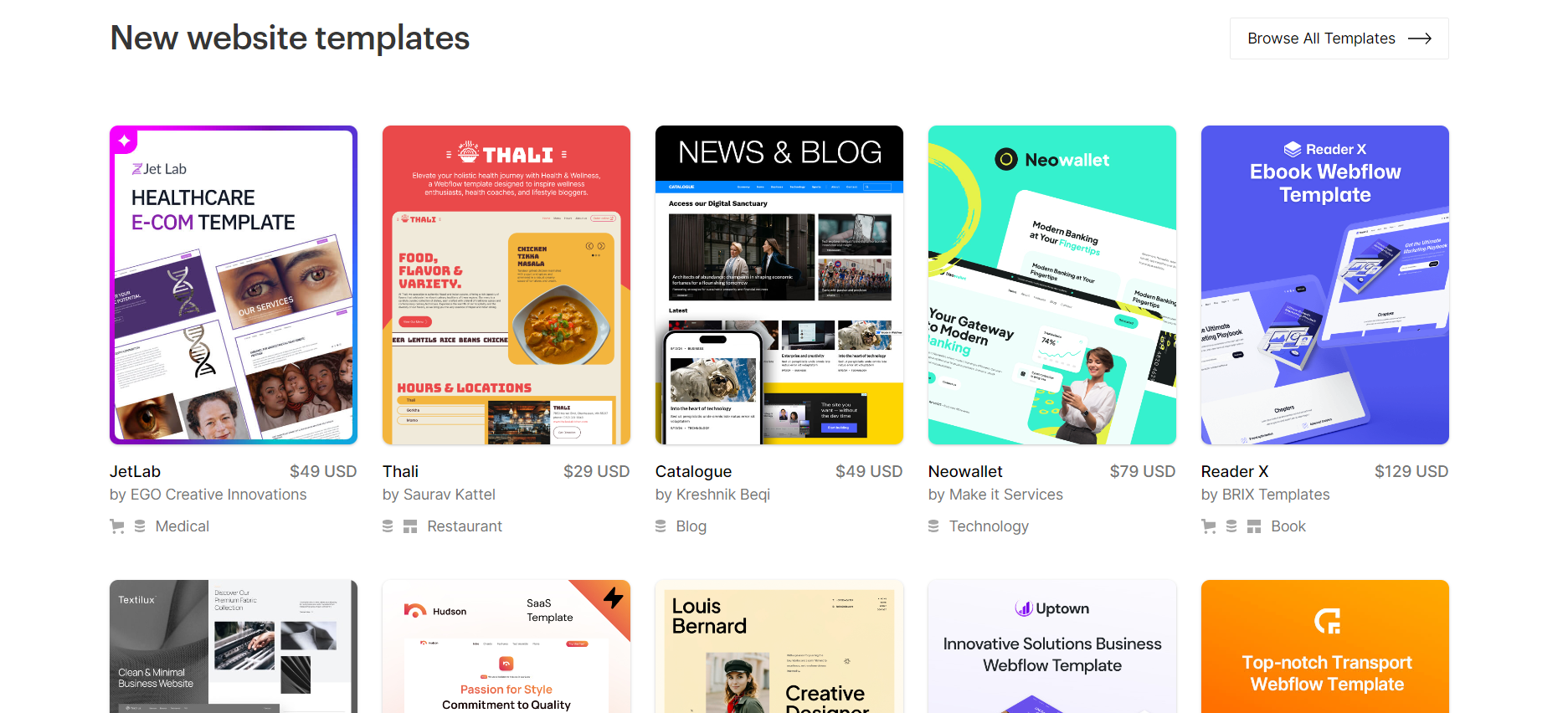
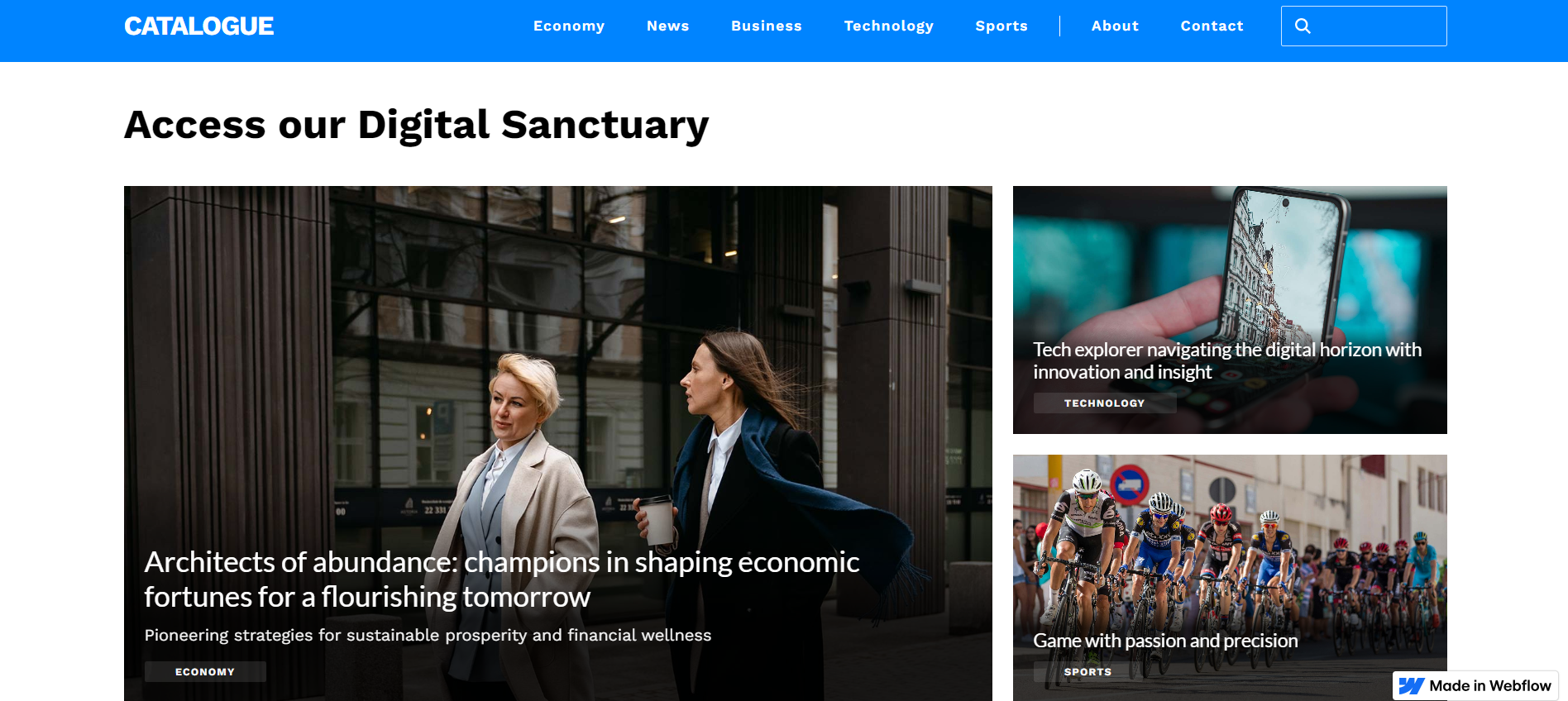
Compared to Webflow, Format is a website builder specifically designed for creatives, offering nearly 100 customizable templates tailored for various artistic disciplines. It emphasizes high-quality imagery and mobile-friendly designs, ensuring portfolios look professional on any device. While it offers easy-to-use features and e-commerce tools for selling work directly, some users find its interface less intuitive and its feature set somewhat limited for broader website needs.
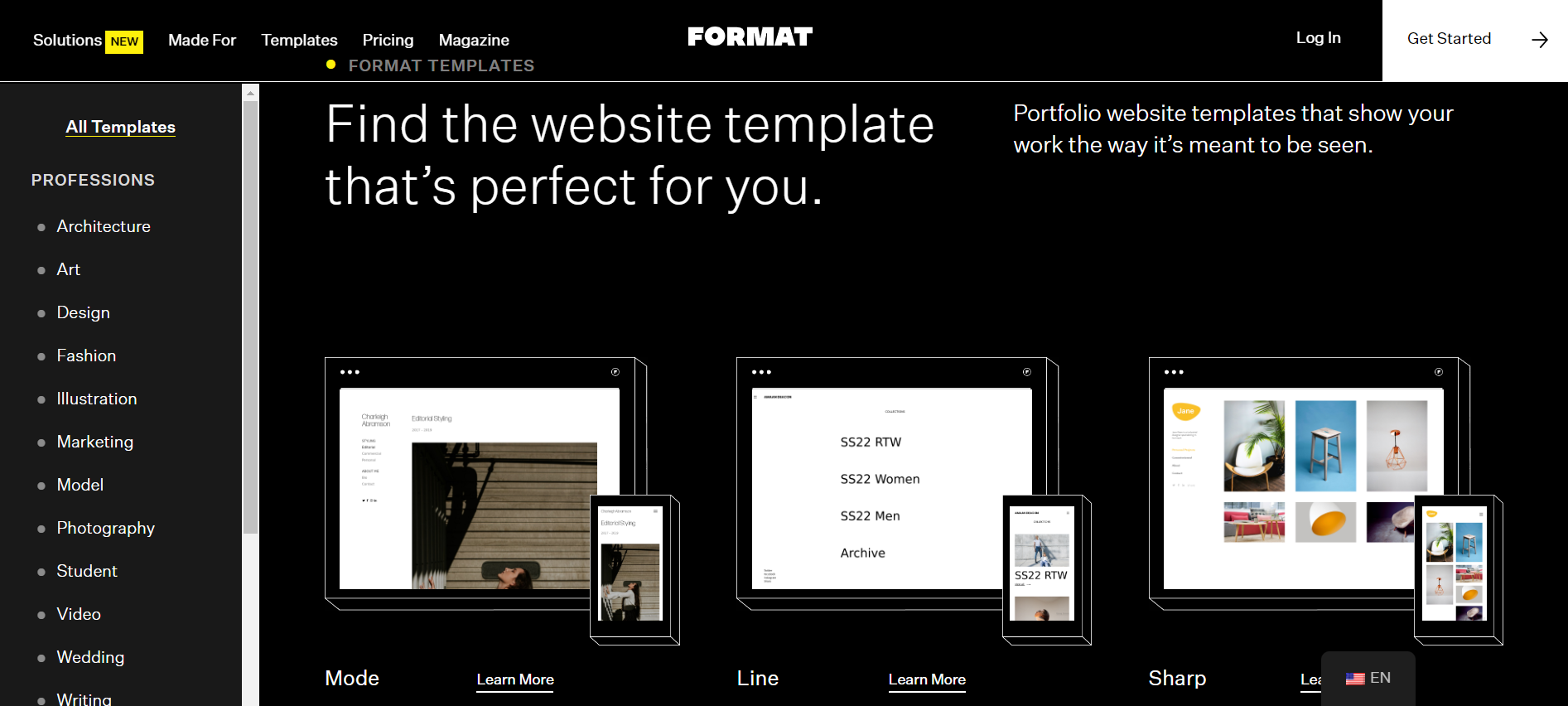
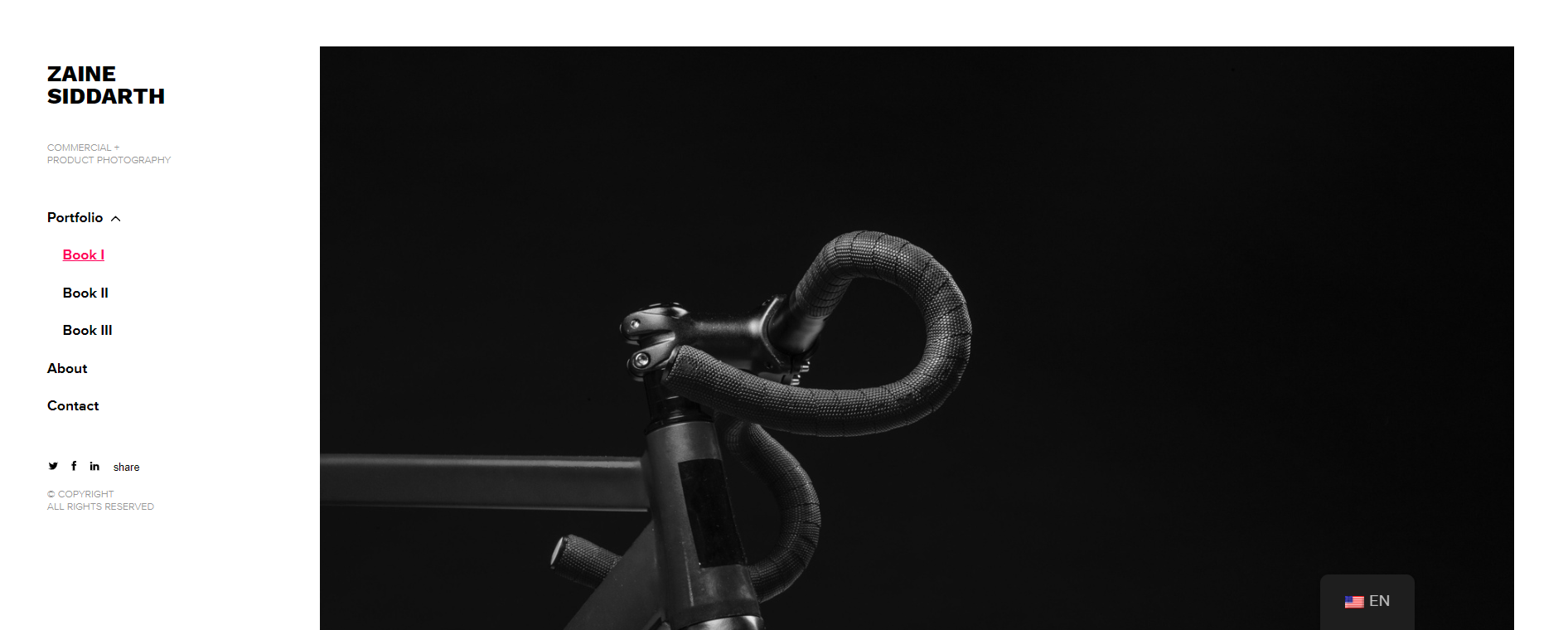
Get a head start on website creation with AI
Create a custom website tailored to your business needs 10X faster with 10Web AI Website Builder!
Ease of use
Ease of useReflects the platform’s overall user-friendliness.Score
Components:
- Learning curve (40%): Quickness and ease of getting started.
- Interface design (30%): Simplicity and intuitiveness of layout.
- User guidance (20%): Quality of tutorials and support.
- Flexibility (10%): Adaptability to various user skills.
 7.5
7.5
 8.3
8.3
🏆 Winner: Format
. With a score of 8.3, Format is more user-friendly, especially for creative professionals who need an easy-to-use platform to showcase their work. Webflow, scoring 7.5, offers a robust platform but with a steeper learning curve, especially for those new to web design. If ease of use is a priority, Format is the clear winner in this category.
Learning Resources
🏆 Winner: Webflow
. While both platforms offer solid learning resources, Webflow goes a step further with its comprehensive set of tutorials and courses, making it easier for users to learn and adapt.
For ecommerce
EcommerceMeasures the platform’s effectiveness in supporting online business activities.Score Components:
- Ecommerce themes and templates (20%): Variety and design of templates.
- Product management (25%): Ease of managing and organizing products.
- Payment options (25%): Variety and convenience of payment methods.
- Ecommerce features (20%): Features for managing an ecommerce store.
- Integration (10%): Compatibility with external e-commerce tools and services.
 8.5
8.5
 5.2
5.2
Webflow stands out in the ecommerce sector with its extensive payment gateways, including Stripe and PayPal, offering global transaction flexibility. It’s also adept at handling a large volume of products, ideal for growing online stores. Its ecommerce features, from advanced analytics to versatile shipping options, are tailored for vigorous business needs. Format, on the other hand, is competent for smaller stores but doesn’t quite match Webflow’s scalability and depth in ecommerce.

|

|
|
|---|---|---|
|
Ecommerce themes and templates |
7.5 |
4.0 |
|
Product page customization |
8.3 |
5.5 |
|
Payment processing and commissions |
7.8 |
4.5 |
|
POS capabilities |
6.5 |
0.0 |
|
Payment gateways |
8.0 |
6.5 |
|
Product numbers |
7.0 |
5.0 |
|
Additional ecommerce features |
7.9 |
3.5 |
Webflow ecommerce features:
- Checkout and Payment Processing with Stripe, PayPal, etc.
- Marketing and Promotions
- Tax and Shipping calculations
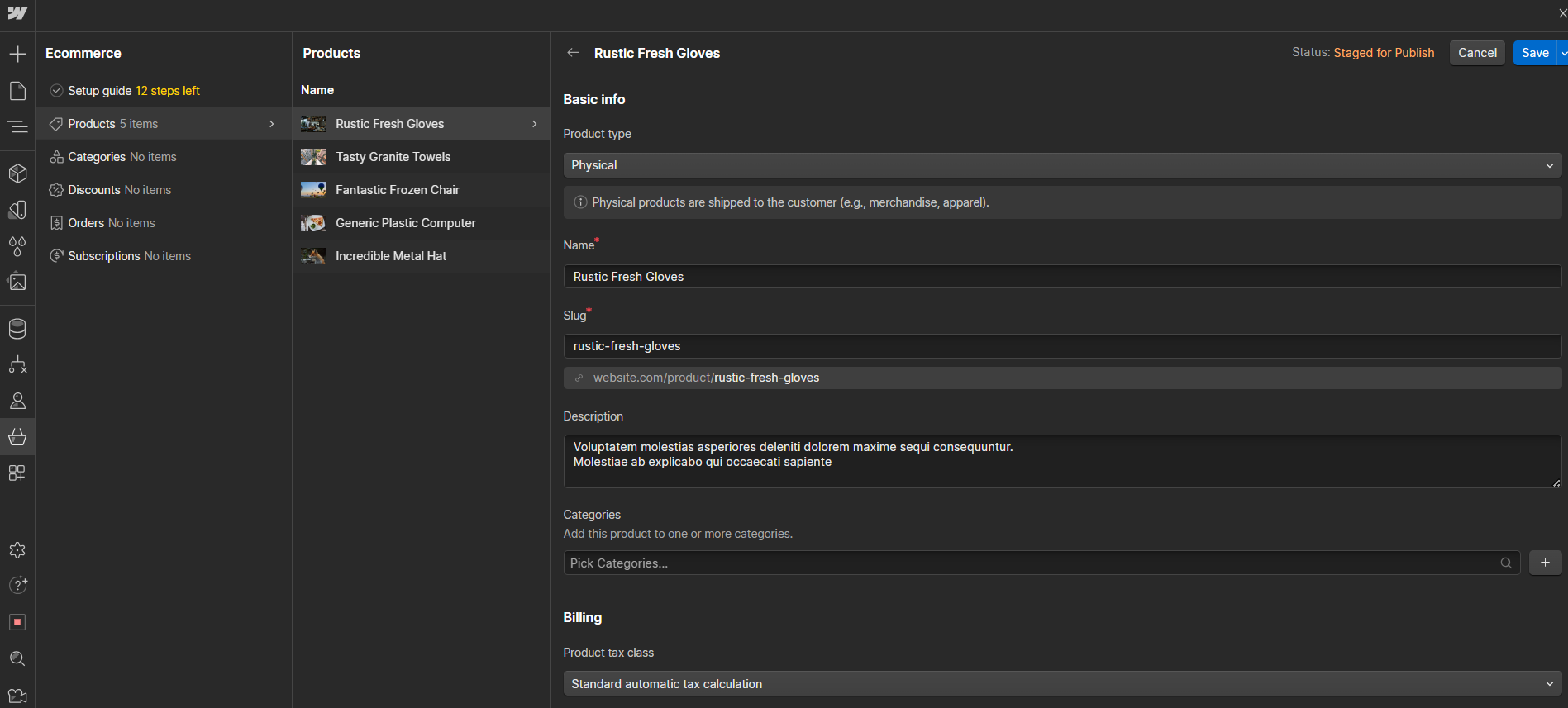
Format ecommerce features:
- Inventory management and tracking
- Discounts
- Multiple currency options
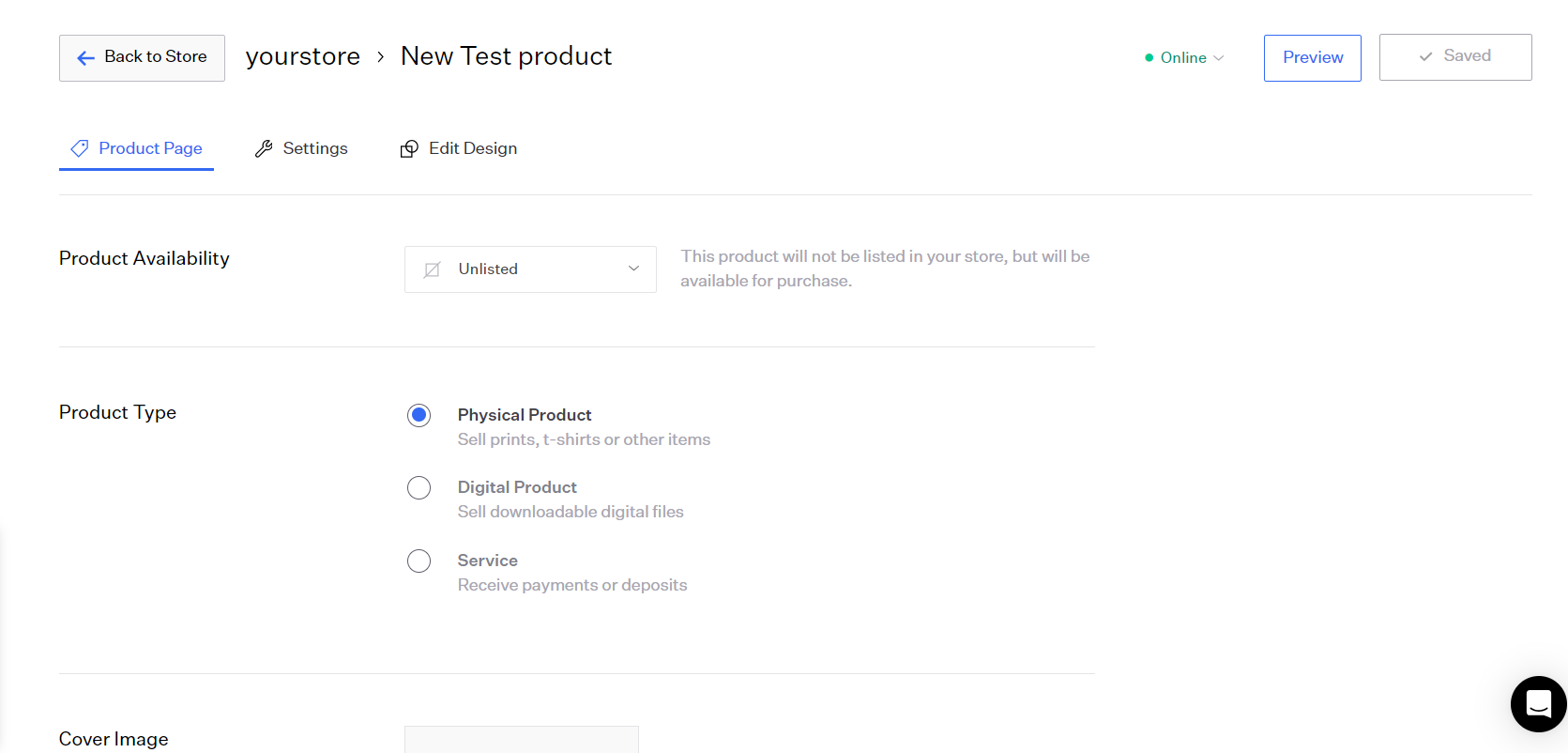
Ecommerce themes & templates
Webflow offers a diverse range of ecommerce themes and templates designed to cater to various types of online stores, from fashion and technology to artisan crafts and children’s products. Each template comes equipped with built-in ecommerce functionality, allowing you to easily add products and manage your store without the need for coding. In contrast, Format does not have ecommerce specific templates.
Product page customization
Webflow offers extensive customization options for eCommerce product pages, allowing users to design and personalize their pages without coding. It provides tutorials for creating product pages from scratch, offers responsive templates for various devices, and allows users to add custom code and dynamic content using Webflow’s CMS for maximum customization flexibility. Format, on the other hand, offers limited specific details on product page customization directly, but its e-commerce features suggest a focus on showcasing products through high-quality imagery and detailed descriptions. You can manage product specifics like shipping, availability, and pricing, with customization likely extending to layout and presentation styles to highlight products effectively.
Payment processing
When it comes to payment processing, Webflow provides a flexible and secure platform for payment processing and ecommerce through integrations with leading payment gateways like Stripe and PayPal. This allows users to accept a wide range of payments, including credit card transactions directly from their websites. Given the versatility of Stripe and PayPal, businesses can manage online sales efficiently, and these integrations likely support various transaction types, potentially including POS transactions for physical sales environments. Format, on the other hand, offers integration with major payment gateways, including Paypal and Stripe. It charges a 15% commission on the Pro plan and 5% on the Pro Plus plan. However, the platform does not have built-in POS (Point of Sale) capabilities.
Considering the features, availability, cost, and flexibility, Webflow appears to be a more robust and flexible ecommerce solution compared to Format. However, if you are a creative professional looking for a platform to showcase your work and sell a few items, Format might still be worth considering.
Website Editors
Website EditorsEvaluates the platforms’ website building and editing capabilities.Score Components:
- Customization tools (40%): Range and power of editing features.
- Editor usability (30%): User experience within the editor.
- Design flexibility (20%): Freedom in layout and design changes.
- Update and maintenance ease (10%): Simplicity of updating and maintaining the site.
 9.0
9.0
 7.5
7.5
🏆
Winner: Webflow
. With a score of 9.0, Webflow’s editor is praised for its intuitive visual interface that simplifies the process of designing and editing responsive websites without requiring deep technical knowledge. It offers a perfect blend of ease of use for beginners and the flexibility for more advanced users, enabling significant cost savings by allowing users to customize and manage their sites without hiring professionals.
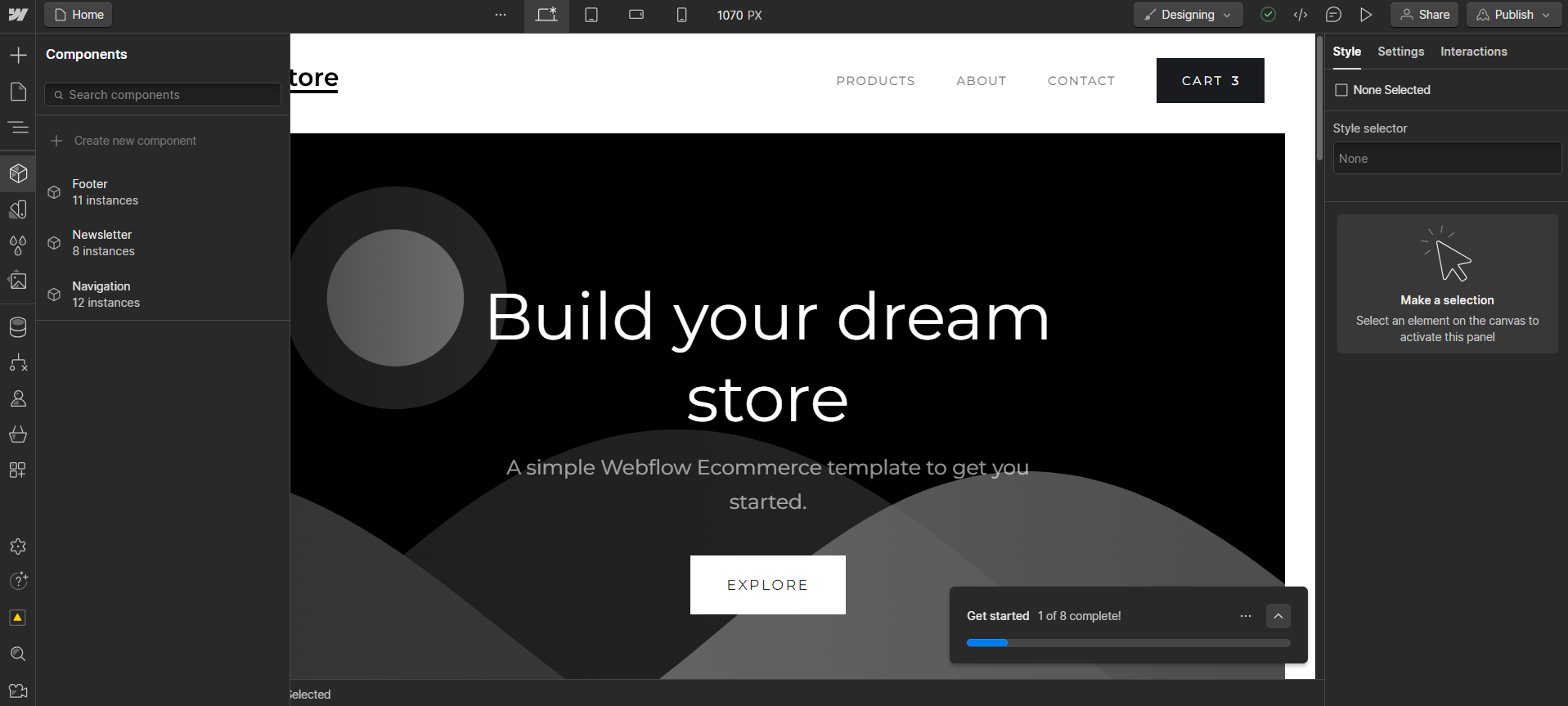
Format’s editor, scoring 7.5, is highly regarded for its user-friendliness and is especially geared towards creative professionals, making it accessible for beginners. With a quick setup process, a wide range of customizable templates, and no need for coding knowledge, users can easily create and manage their websites. However, its focus on portfolio websites limits its versatility for other uses.
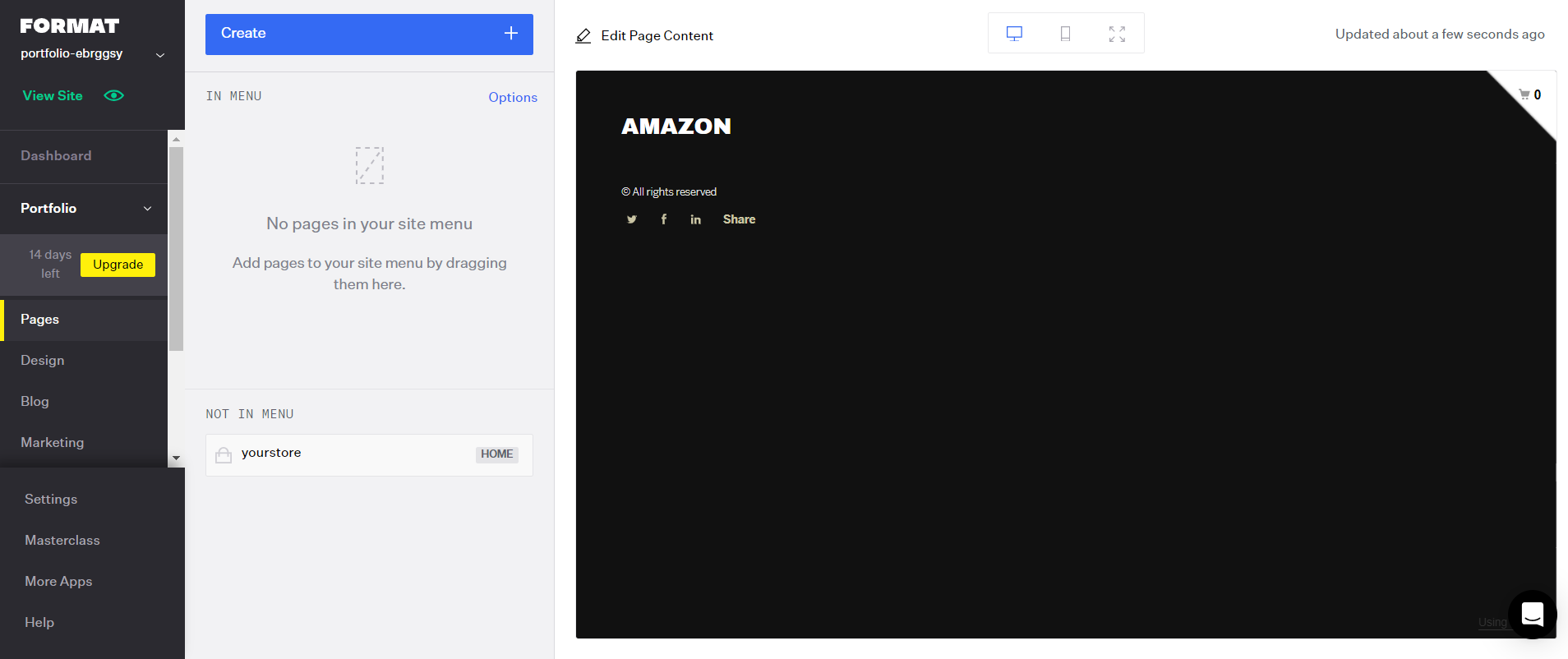
Mobile editor/app
 7.0
7.0
 4.0
4.0
🏆
Winner: Webflow
. Both Webflow and Format lack a dedicated mobile editor app. However, Webflow has a third-party app called EditFlow, created by a community member for Webflow users, which is currently only available for iOS. This gives Webflow an edge over Format, which does not offer a dedicated app for editing on mobile devices.
While it is possible to edit your website using a mobile browser on Format, the interface presented is the same as the desktop version, making it difficult to use on a smartphone. Therefore, Webflow scores higher in the mobile editor category due to the availability of a third-party app.
Product testing options
Product Testing OptionsAssesses the options for trying out platform features before commitment.Score Components:
- Trial quality (40%): Extent and usefulness of the trial or free version.
- Feature accessibility (30%): How many features are available to test.
- Trial duration (20%): Length of the trial period.
- Ease of transition (10%): Smoothness of moving from trial to paid plans.
 6.3
6.3
 8.3
8.3
Overall Result
:
Format Wins
. Format scores 8.3 in product testing options, offering a 14-day free trial and a 30-day money-back guarantee. It also allows users to test premium features during the trial period. Webflow, scoring 6.3, offers a free version with basic features but lacks a trial version and a money-back guarantee.

|

|
|
|---|---|---|
|
Free Plan |
Yes |
No |
|
Trial Duration |
No |
14 days |
|
Testing Premium Features |
Basic features with free plan |
During free trial period |
|
Money Back Guarantee |
No |
30 days |
Price
PriceLooks at the cost-effectiveness and value for money of each platform.Score Components:
- Plan value (40%): What each pricing tier offers.
- Transparency and clarity (30%): Clearness of pricing structures.
- Flexibility of plans (20%): Range of options to suit different budgets.
- Hidden costs (10%): Additional expenses not included in the plan.
 8.0
8.0
 7.9
7.9
Webflow and Format both offer competitive pricing, but Webflow provides a wider range of plans, including a free starter plan and an enterprise plan with custom pricing.

|

|
|
|---|---|---|
|
Free |
Starter (Free): Limited features for new sites, including 2 static pages and 50 form submissions lifetime. |
No offering at this amount. |
|
$10-$20 |
Basic ($18/month): Suitable for simple sites with a custom domain, including basic SEO controls and 500 monthly form submissions. And 100 pages. Value for price: 6.5 |
Basic ($12.00/month): Offers core services like mobile-optimized site, up to 10 web pages, and up to 70 high-resolution images. 3 client galleries, up to 2GB file transfers. No video uploads or custom code editor. Value for price: 5.0 |
|
$20-$30 |
CMS ($29/month): For content-driven sites with 2,000 CMS items, 1,000 monthly form submissions, and full API access. And 150 website pages. Value for price: 7.5 |
Pro ($24.00/month): Includes all from Basic, plus unlimited web pages, 1500 high-resolution images,15 mins video hosting, 100GB cloud storage, a free custom domain, Online Store with up to 15 products, 50 client galleries and up to 5GB file transfers. Value for price: 7.5 |
|
$30-$45 |
Standard ($42/month): For new businesses with up to 500 ecommerce items, includes basic ecommerce features, and 2% transaction fee Value for price: 8.5 |
Pro Plus ($36.00/month): Adds on Pro features with priority support, unlimited pages and high-res images, 120 mins video hosting, and 1TB cloud storage. Online Store with up to 1000 products, 250 client galleries and 10GB file transfers. Value for price: 8.5 |
|
$45-$50 |
Business ($49/month): High traffic capacity, advanced features like site search, and up to 10 content editors. Value for price: 8.0 |
No offering at this amount. |
|
$80-$90 |
Plus ($84/month): Higher volume businesses with 0% transaction fees, up to 5,000 ecommerce items, and advanced features. Value for price: 9.0 |
No offering at this amount. |
|
$200+ |
Advanced ($235/month): Scalable solution for large online stores with up to 15,000 ecommerce items and the highest caps and 0% transaction fees. Value for price: 9.5 |
No offering at this amount. |
location. As a result in rare cases the prices displayed here can differ from the ones you see on their
websites.
Hosting quality
Hosting
qualityExamines the reliability and performance of the hosting solutions.Score Components:
- Uptime (40%): Consistency and reliability of website availability.
- Speed (30%): Loading times and performance.
- Bandwidth and storage (20%): Sufficiency of resources provided.
- Data centers (10%): Quality and distribution of hosting infrastructure.
 8.9
8.9
 5.0
5.0
🏆
Winner: Webflow
Webflow offers managed hosting included in all of their plans, with a 99.99% uptime and a guarantee for the Enterprise plan. They leverage a globally distributed network of data centers from Amazon Web Services (AWS) and Fastly. On the other hand, Format does offer hosting, but does not provide any specific details about the type of hosting, uptime, uptime guarantee, or data centers. This lack of transparency results in a lower rating for Format.

|

|
|
|---|---|---|
|
Do they offer hosting? |
Yes, included in all paid plans |
Yes, but no further details provided |
|
Data Centers: |
Uses a globally distributed network of data centers from Amazon Web Services (AWS) and Fastly |
No information provided |
|
Type of hosting: |
Managed Hosting |
No information provided |
|
Uptime: |
99.99% |
No information provided |
|
Uptime Guarantee: |
Only Enterprise plan, 99.99% |
No information provided |
Website Speed Optimization
Website Speed OptimizationEvaluates optimization of website loading timesScore Components:
- PageSpeed Score (30%): Google’s score indicating performance optimization.
- Loading Time (30%): The average time until a website is fully interactive.
- Mobile Optimization (15%): Optimization effectiveness for mobile devices.
- Resource Optimization (15%): Optimizing images, scripts, and other heavy resources.
- CDN Usage (10%): Use of CDN to enhance speed across geolocations.
 8.1
8.1
 5.0
5.0
🏆 Winner: Webflow
Both Webflow and Format prioritize website performance and page speed, but Webflow’s comprehensive strategies and focus on Core Web Vitals give it a clear edge over Format.

|

|
|
|---|---|---|
|
Focus |
Custom Cache Settings, Custom Element Lazy Loading, Automatic Minification, Responsive templates, CDN |
Image and video optimization |
|
Performance Tools |
Google Lighthouse, PageSpeed Insights |
Google PageSpeed Insights |
|
Key Strategies |
Custom Cache Settings, Custom Element Lazy Loading, Automatic Minification, Responsive templates, CDN |
Image and video optimization |
|
Load Times |
Below 2 seconds average |
Varies depending on optimization and website complexity |
|
Page Speed Scores Range |
77.2/100 |
Varies depending on optimization and website complexity |
|
Core Web Vitals Improvement |
Improving components’ usability, and emphasis on LCP, FID and CLS |
Format does not disclose any information on their Core Web Vitals improvements |
Webflow’s approach to enhancing site speed includes custom cache settings, custom element lazy loading, automatic minification, responsive templates, and a content delivery network (CDN). This comprehensive strategy, combined with a focus on improving components’ usability and an emphasis on Largest Contentful Paint (LCP), First Input Delay (FID), and Cumulative Layout Shift (CLS), gives Webflow an edge in website speed optimization. Webflow’s load times are below 2 seconds on average, and its PageSpeed score is 77.2/100.
Format, on the other hand, focuses on image and video optimization for speed optimization. However, its load times and PageSpeed scores vary depending on optimization and website complexity. Format does not disclose any information on their Core Web Vitals improvements, which puts it at a disadvantage compared to Webflow.
Get a head start on website creation with AI
Create a custom website tailored to your business needs 10X faster with 10Web AI Website Builder!
Plugins and integrations
Plugins and integrationsMeasures the range and effectiveness of additional plugins and integrations.Score Components:
- Variety of options (40%): Range of available add-ons.
- Integration smoothness (30%): Ease of integrating plugins into the site.
- Quality of plugins (20%): Functionality and reliability of the options.
- Custom integration capabilities (10%): Support for custom or third-party integrations.
 5.5
5.5
 4.9
4.9
🏆 Winner: Webflow.
With a score of 5.5, Webflow takes the lead over Format, which scores 4.9. Webflow offers a built-in library of website elements and functionalities, and integrates with a number of third-party services and tools, adding more functionality to your website. On the other hand, Format offers support for a limited selection of plugins/integrations, including Adobe Lightroom, Mailchimp, and Google Analytics. However, its overall capabilities for expansion through plugins and integrations are notably limited.
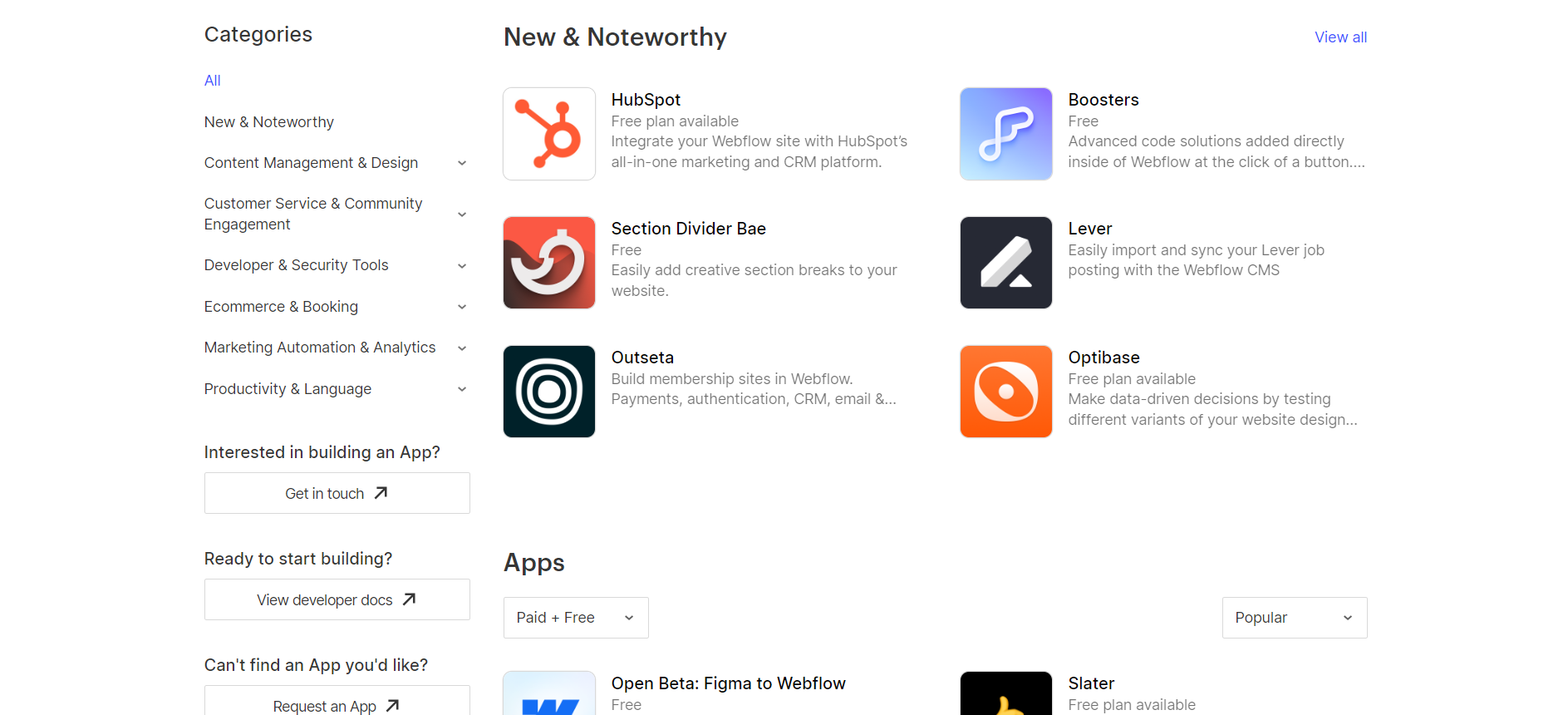
Marketing Features
Design FunctionalitiesRepresents how well each platform allows for creative design and customization of websites.Score Components:
- Template Variety (30%): Range and quality of design templates.
- Customization (30%): Flexibility and options for design alterations.
- User Interface (20%): Ease and intuitiveness of the design process.
- Responsiveness (10%): Adaptability to different devices and screen sizes.
- Innovation (10%): Unique design features and tools.
 7.8
7.8
 5.3
5.3
🏆
Overall Winner: Webflow
. Webflow stands out for its comprehensive marketing tools, especially in SEO, email marketing, and analytics. Format, while offering basic marketing features, lacks in advanced capabilities.

|

|
|
|---|---|---|
|
SEO Tools |
|
|
|
Email Marketing |
|
|
|
Blogging |
|
|
|
Social Media Integration |
Simplifies content sharing and audience engagement on major social platforms |
Limited to Instagram integration |
|
Analytics and Reporting |
Integrates with Google Analytics for comprehensive web traffic and behavior analysis |
Basic analytics through Google Analytics integration |
|
Ads and Promotions |
Supports ad and promotion management through integration with platforms like Google Optimize |
Basic promotional features, lacks third-party integrations |
Customer Support
Customer supportEvaluates the quality and availability of support options.Score Components:
- Response time (40%): Speed of support responses.
- Support quality (30%): Effectiveness and helpfulness of the support.
- Availability (20%): Range of support channels (phone, chat, email).
- Resource richness (10%): Quality of self-help and educational materials.
 8.3
8.3
 7.0
7.0
🏆 Winner: Webflow
. With a customer support score of 8.3, Webflow outperforms Format, which has a score of 7.0. Webflow offers 24/7 customer support through various channels including live chat, email, and a community forum. They also provide extensive documentation and video tutorials to help users navigate their platform and troubleshoot common problems. For enterprises, Webflow offers a dedicated Customer Success Manager for personalized onboarding, training, and optimization, and priority email and chat support from specialists.
On the other hand, Format also offers 24/7 customer support through email or live chat. However, they do not provide specialized support for enterprises, which might be a drawback for larger organizations.
Security
SecurityLooks at the platforms’ security measures and data protection.Score Components:
- Data protection (40%): Safeguards for user and customer data.
- SSL and encryption (30%): Implementation of secure connections.
- Compliance (20%): Adherence to industry security standards.
- Regular updates (10%): Frequency of security updates and patches.
 7.8
7.8
 7.4
7.4
🏆
Winner: Webflow
. Webflow takes the lead in security with a score of 7.8, compared to Format’s 7.4. Webflow’s commitment to data privacy and security is evident in its robust encryption techniques, strict access controls, and regular system updates and audits. These measures ensure that user information remains confidential and protected. Additionally, Webflow uses SSL encryption to secure data transmission and offers two-factor authentication for added security.
Format also emphasizes the security of user data through encrypted data storage and strict access controls. It regularly updates its security measures to protect against new threats and complies with data protection regulations like GDPR. However, specific details about Format’s security measures were not directly mentioned, which makes it slightly less transparent than Webflow in this aspect.
AI Capabilities
AI capabilitiesMeasures the effectiveness of AI-driven features and tools.Score Components:
- Automation efficiency (40%): Impact of AI on streamlining processes.
- Personalization (30%): AI-driven customization for users or customers.
- AI-Assisted design (20%): Role of AI in website design and functionality.
- Data analysis (10%): Use of AI in interpreting user data and analytics.
 8.3
8.3
 0.0
0.0

|

|
|
|---|---|---|
|
AI Builder |
Announced, not yet available |
Not available |
|
AI Ecommerce features |
Not available |
Not available |
|
AI content generation |
Announced, not yet available |
Not available |
|
Additional AI features |
Announced, not yet available |
Not available |
🏆 Winner: Webflow
. Although Webflow’s AI capabilities are not yet available, they have announced plans to introduce AI features that will improve the visual development learning journey, create and iterate designs faster with an AI copilot, and offer AI-customized templates for quicker website creation. In contrast, Format does not have any AI capabilities.
User Management
User ManagementAssesses the platforms’ capabilities in managing user roles, permissions, and accessibility.Score Components:
- Role Customization (40%): Flexibility in creating and defining user roles and
permissions. - Ease of Management (30%): User interface and tools for managing users.
- Access Control (20%): Effectiveness of access control measures for different user
levels. - Scalability (10%): Ability to manage a growing number of users efficiently.
 8.3
8.3
 2.8
2.8
🏆 Winner: Webflow
. Webflow offers a more comprehensive user management system compared to Format.
- Webflow’s user management varies by plan, with Core, Growth, and Enterprise plans offering unlimited editors, while others limit content editors to 3 or 10 per site. Access levels include Designer for full access and Editor for content editing. Workspace roles like Admin, Designer, and Editor ensure collaboration and security through features like the Site Activity Log and role-based permissions.
- Format, on the other hand, only allows one user to manage and edit websites.
Webflow User Roles and Access Levels:
| Role | Description | Access Highlights |
|---|---|---|
| Workspace Owner | Full control over Workspace settings and member management. | Edit settings, manage billing, access/edit all sites, invite/remove members, manage permissions. |
| Workspace Admin | Similar to the owner with some restrictions. | Edit settings, manage billing, access/edit all sites, invite/remove members (except owner), manage permissions. |
| Workspace Member | Limited control focused on site interaction. | Download invoices, access/edit sites, invite members. |
| Workspace Guest | Temporary collaborators with limited access. | Access/edit sites. |
| Workspace Commenter | Limited to commenting for feedback on sites. | Create/view/resolve comments, preview sites. |
| Site Admin | Full control at the site level. | Manage permissions, delete/transfer sites, billing management, design and publish changes. |
| Can Design | Design capabilities with some restrictions on publishing. | Design in Designer, create/modify classes and components, publish changes with permission. |
| Can Design (Limited) | Restricted design capabilities for Enterprise customers. | Create new classes, modify created classes, limited publishing capabilities. |
| Can Edit | Content editing without full design privileges. | Edit text/links/images, manage assets, publish Collection items and Ecommerce products. |
| Can Comment (Site Level) | Commenting for feedback at the site level. | Create/view/resolve comments, preview sites. |
Format User Roles and Access Levels:
Format only allows one user to manage and edit websites, hence there are no specific roles or access levels.
Additional Features

|

|
|
|---|---|---|
|
SSL Certificate |
|
|
|
Custom Domain |
|
|
|
Free Custom Domain Included |
|
|
|
International Domains |
|
|
|
Mobile Responsive |
|
|
|
Page Speed |
|
|
|
Website Builder Mobile App |
|
|
|
Convert a Website To An App |
|
|
|
Website Analytics |
|
|
|
Multilingual Sites |
|
|
|
Multiple Users |
|
|
User Feedback
Webflow receives high praise for its user-friendly interface, eliminating the need for coding while offering extensive design flexibility. Users appreciate its scalability, cost-effectiveness, and seamless integration of essential features like forms and CMS. However, some users note a slight learning curve and occasional limitations, particularly in ecommerce functionalities and content management. Overall, Webflow proves to be a powerful tool for building and managing websites, offering robust features for both beginners and experienced developers, albeit with some room for improvement in certain areas like collaborative editing and content management.
Users highly praise Format for its user-friendly website builder, particularly noting the ease of adding images and the effectiveness of customer service. Many reviewers appreciate the variety of modern templates and the platform’s suitability for users without technical expertise, especially photographers. Format’s mobile app and proofing section receive special mentions for their convenience and functionality. However, some users desire more customization options, particularly for mobile views, and mention minor limitations in template flexibility and SEO functionality. Overall, Format is celebrated for its ability to provide a professional online presence easily and efficiently, solving users’ needs for showcasing work and attracting new clients.
The making of this blog
We followed a clear, step-by-step process to write and research this article.
FAQ
Which platform is better for creative professionals, Webflow or Format?
Can I use Webflow and Format for ecommerce?
Which platform offers better customer support?
How do Webflow and Format compare in terms of ease of use?
Which platform is more suitable for building a professional business website?
Are there any AI capabilities in Webflow or Format?
What are the main differences in pricing between Webflow and Format?
Which platform offers better website speed optimization?
Can I manage multiple users in Webflow and Format?
How do Webflow and Format compare in terms of additional features?










